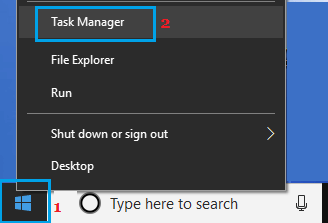
Press the Windows key + R to open the Run box. This method allows you to use the mouse only and simply ignore the keyboard, making it the likely preferred method of those who like using the mouse instead of the keyboard. The Task Manager will launch immediately. Right-click the empty space on the taskbar, and then select “ Task Manager” from the context menu. This keyboard shortcut is a global hotkey, means it is available from any app you running and even when your Explorer shell is not running! This should be the simplest way to launch Task Manager. Just press Ctrl + Shift + Esc key combination on your keyboard and it can open the Task Manager directly. In this tutorial we’ll show you 5 quickest ways to open the Task Manager in Windows 10 and Windows 8. There are multiple ways you can launch Task Manager. We usually use it to check the overall performance of our computers or close a program that stops responding (hangs). Alternatively, you can simply select the item and click the End task button in the bottom-right corner.Task Manager is one of the most-used system utilities in Windows.


Stopping processes with high-resource usageĪfter you identify the problem, right-click the process, and select End task to terminate it. If you're having problems downloading files, and you see "Network" stuck at 0 percent, you may have an idea of what's going on. Network connectivity is almost never the reason your system is slow, but there could be a problem in the network causing web content to take a long time to load. If you're not copying files or rendering videos, disk usage should be below 5 percent.

Generally speaking, depending on your system configuration, your total memory usage should be below 60 percent. Memory usually won't be an issue unless you run out of it, in which case your computer will start using virtual memory, and that can cause your PC to slow down. Applications that are running, even if you're not using them, and processes use part of your computer's memory, and that usage will increase as you use or launch more applications. Typically, when you're not actively using applications and your computer isn't working on anything specific, such as maintenance, your total CPU usage should be less than 30 percent. You'll notice that as a process starts to consume more resources, the color begins to change from a light- to a dark-shade of orange, making it easier to tell which one is causing the problem.

Task Manager also uses colors to highlight processes that use the most resources.


 0 kommentar(er)
0 kommentar(er)
